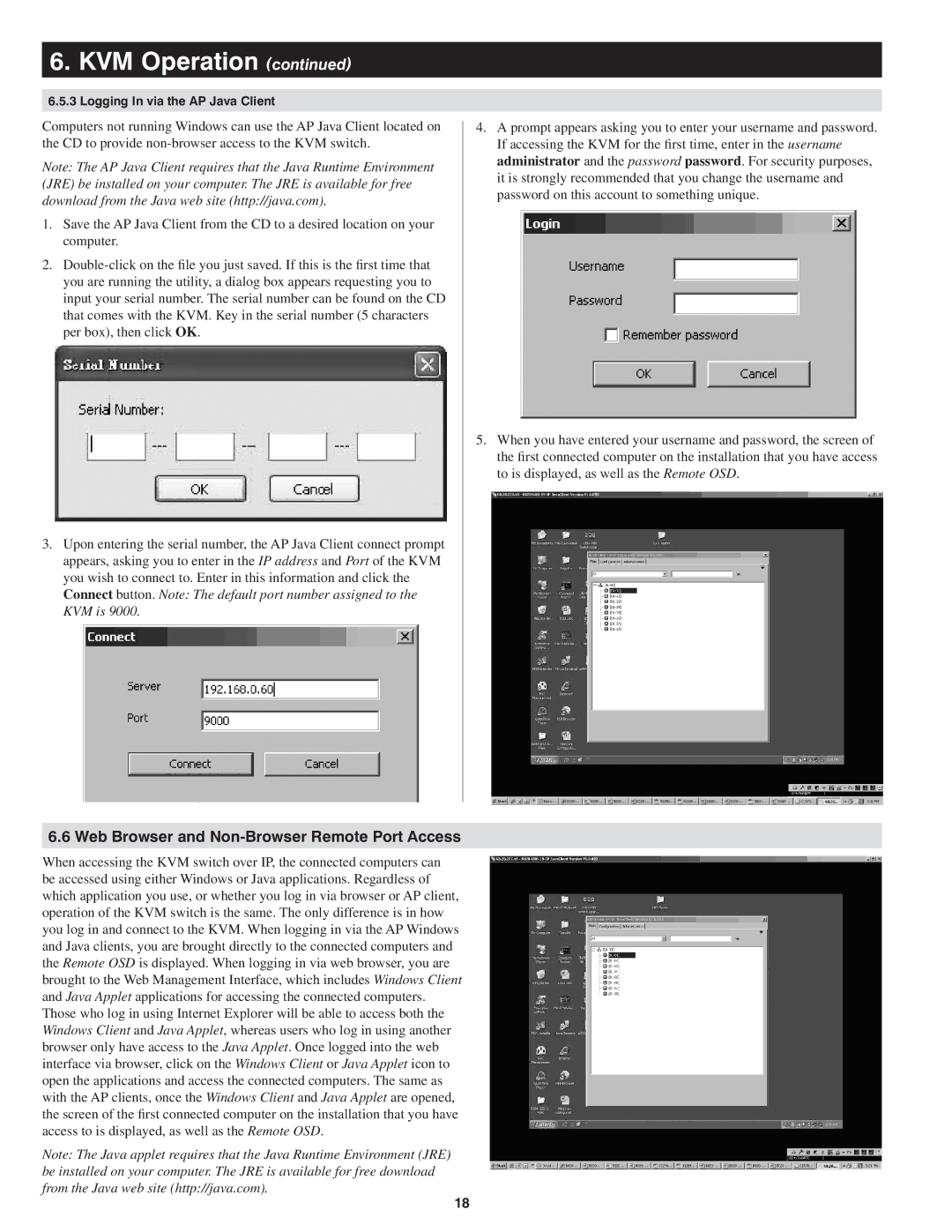
6. KVM Operation (continued)
6.5.3 Logging In via the AP Java Client
Computers not running Windows can use the AP Java Client located on the CD to provide
Note: The AP Java Client requires that the Java Runtime Environment (JRE) be installed on your computer. The JRE is available for free download from the Java web site (http://java.com).
1.Save the AP Java Client from the CD to a desired location on your computer.
2.
3.Upon entering the serial number, the AP Java Client connect prompt appears, asking you to enter in the IP address and Port of the KVM you wish to connect to. Enter in this information and click the Connect button. Note: The default port number assigned to the KVM is 9000.
4.A prompt appears asking you to enter your username and password. If accessing the KVM for the first time, enter in the username administrator and the password password. For security purposes, it is strongly recommended that you change the username and password on this account to something unique.
5.When you have entered your username and password, the screen of the first connected computer on the installation that you have access to is displayed, as well as the Remote OSD.
6.6 Web Browser and Non-Browser Remote Port Access
When accessing the KVM switch over IP, the connected computers can be accessed using either Windows or Java applications. Regardless of which application you use, or whether you log in via browser or AP client, operation of the KVM switch is the same. The only difference is in how you log in and connect to the KVM. When logging in via the AP Windows and Java clients, you are brought directly to the connected computers and the Remote OSD is displayed. When logging in via web browser, you are brought to the Web Management Interface, which includes Windows Client and Java Applet applications for accessing the connected computers. Those who log in using Internet Explorer will be able to access both the Windows Client and Java Applet, whereas users who log in using another browser only have access to the Java Applet. Once logged into the web interface via browser, click on the Windows Client or Java Applet icon to open the applications and access the connected computers. The same as with the AP clients, once the Windows Client and Java Applet are opened, the screen of the first connected computer on the installation that you have access to is displayed, as well as the Remote OSD.
Note: The Java applet requires that the Java Runtime Environment (JRE) be installed on your computer. The JRE is available for free download from the Java web site (http://java.com).
18
